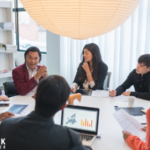The pandemic’s onset reshaped how arts organizations support artists, prompting a reevaluation of traditional grantmaking practices. Artist Relief, a collaboration across diverse arts entities, emerged during this time, distributing significant emergency funds to artists in need. This initiative highlighted the importance of offering flexible financial support, setting a new standard in the arts sector. As the field evolves, the focus remains on finding innovative ways to meet the diverse needs of artists, ensuring sustainability and accessibility in funding approaches.
In recent years, arts organizations have increasingly adapted to more artist-centered models. Earlier approaches often left many deserving artists without adequate support, leading to calls for more inclusive funding structures. The Crip Fund, Cerf+, and the Robert Rauschenberg Foundation have exemplified this shift by prioritizing accessibility and sustained emergency funding. These models demonstrate a trend towards flexible funding arrangements, emphasizing the critical role of collaboration in addressing artists’ needs. Now, organizations are embracing similar strategies to ensure equitable distribution of resources, particularly during times of crisis.
What Drives New Artistic Support Models?
Organizations like Disability Futures have been pivotal in addressing financial and systemic challenges faced by disabled artists. By paying grants over several years using ABLE accounts, they mitigate potential tax issues and ensure ongoing support. This approach has underscored the significance of adaptability and collaboration in grantmaking. As arts nonprofits aim to support socially engaged artists more effectively, these models help refine strategies and highlight the importance of involving artists in decision-making processes.
How Are Arts Organizations Restructuring Their Support?
A Blade of Grass (aBoG) has taken noteworthy steps by forming an artist-led board to guide its governance, aligning its leadership with artists’ needs. The organization’s Field Funds initiative adopts a randomized selection process, offering an equal opportunity for artists to receive support. This model is similar to the Andy Warhol Foundation’s Regional Regranting Program, focusing on community engagement and equitable distribution of resources. Such initiatives highlight a growing trend in the arts sector to involve artists directly in governance and funding decisions, ensuring that support structures remain responsive and relevant.
Creatives Rebuild New York (CRNY) and MAP Fund are also exploring innovative support mechanisms. CRNY’s guaranteed income program and MAP Fund’s lottery-based grantmaking emphasize the need to move beyond one-time grants, while Springboard for the Arts’ pilot projects spotlight the value of artist collaboration. These initiatives reflect a broader industry shift towards artist-centered support systems, encouraging organizations to rethink traditional models of grantmaking and recognize the importance of sustained, collaborative efforts.
Adaptability and shared learning are vital as new support models emerge in the arts sector. By collaborating and building on existing work, arts organizations can better serve artists’ diverse needs. Acknowledging the necessity for flexibility, arts nonprofits aim to dismantle silos, fostering a culture of mutual learning and support within the community. The evolving landscape calls for recognizing existing artist-led models and providing the necessary backing to ensure their success.
Arts organizations must acknowledge their role in supporting artists who have long navigated complex systems of care and community. By embracing existing models and providing needed resources, they empower artists to succeed while adapting to new challenges. This ongoing collaboration ensures that both organizations and artists benefit from evolving practices, bolstering the arts community and encouraging sustainable development in the sector.










